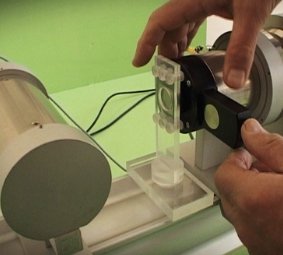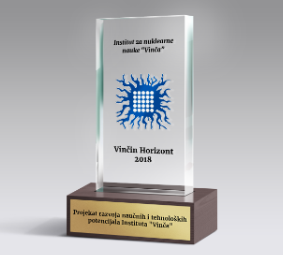OPIS PROJEKTA
Na osnovu aktivnosti koju realizuju istraživači sa ovog projekta, Institut za nuklearne nauke Vinča ostvaruje najrazgranatiju aktivnost u Srbiji u oblasti fizike sa akceleratorima visokih energija. Posebno, Institut Vinča je jedina je institucija iz Srbije koja učestvuje na projektima budućih electron-pozitron sudarača ILC (International Linear Collider), Japan, CLIC (Compact Linear Collider), CERN i Circular Electron Positron Collider (CEPC), Kina.
Aktivnost istrživača na ovom projektu osnova je sporazuma o saradnji Instituta Vinča i CERN na projektu CLIC, kao i sporazuma o saradnji sa Institutom za fiziku visokih energija Kineske akademije nauka IHEP, Peking, na projektu sudarača CEPC.
Istraživači sa ovog projekta su do sada realizovali 4 medjunarodna projekta (DFG, FP7 i dva HORIZON2020) ukupne vrednosti za Institut Vinča od oko 150 kEur. Trenutno se realizuju dva HORIZON2020 projekta: Advanced European Infrastructures for Detectors at Accelerators (AIDA-2020) i Europe-Japan Accelerator Development Exchange Programme (E-JADE), oba vezana za projekat Međunarodnog linearnog sudarača ILC.
Fokus istrazivanja na projektu OI171012 odnosi se na široki dijapazon meranja u Higsovom sektoru (sprezanja, CP svojstva Higgsovog bozona), kao i na instrumentaciju prednje oblasti detetektora i, posebno, merenje integralne luminoznosti na e+e- sudaračima.
U tom smislu, data je značajna kontribucija ključnim publikacijama vezanim za tehnički dizajn e+e- sudarača (ILC i CEPC CDR, CLIC i ILD DBD), kao i visokocitiranim publikacijama (50+) o merenjima u Higsovom sektoru na budućim sudračima (npr. Eur. Phys. J. C 77, 475 (2017). Na projektu su od 2011. godine odbranjene 4 doktorske teze, od kojih je jedna podržana od strane
projekta Nemačke Istrazivačke fondacije DFG No. 436SER113/1/0-1, (M. Pandurovic, DESY-THESIS-2011-045) , jedna od strane projekta AIDA2020 (I. Smiljanic, Univerzitet u Beogradu, 2016), kao i medjunarodno priznate doktorske teze saradnika projekta J. Mamuzic (CERN-THESIS- 2015-419) i G. Milutinovic Dumbelovic (CERN-THESIS- 2017-349).
Detaljne informacije o istraživačkim aktivnostima na projektu OI171012 mogu se naći na strani
http://hep.vinca.rs/index.php/en/
PROJECT DESCRIPTION
Vinca Institute has the most diverse HEP activity in Serbia. We are currently the only Serbian institute participating at future linear collider projects ILC (Japan) and CLIC (CERN). The activity on future e+e- colliders is recently extended to the Circular Electron Positron Collider (CEPC) proposed to be hosted by China. The above serves as a basis for two memorandums of cooperation between the Vinca Institute and CERN and Vinca and the Institute of High Energy Physics of the Chinese Academy of Science (IHEP), Beijing.
The focus of our studies is both on physics and detectors side. Physics wise, the research is focused on the Higgs sector in order to estimate the ultimate sensitivities of future colliders to measure Higgs properties (couplings, CP properties). Of course, indirectly, beyond the Standard Model physics can be probed through precision measurements. Detector wise, we have recognized expertise in the integral luminosity measurement and instrumentation of the very forward region at e+e- colliders and this kind of study is now speeded from linear (ILC and CLIC) to circular machines (CEPC). In these areas Vinca gave significant contribution to the key technical documents like the ILC and CEPC Reference Design Reports and ILD and CLIC Detector Baseline Documents, together with other highly cited publications like the CLIC Higgs paper paper (Eur. Phys. J. C 77, 475 (2017), cited 50+).
More on our research activity can be found at http://hep.vinca.rs/index.php/en/
There is ongoing realization of two HORIZON2020 projects related to the ILC: Advanced European Infrastructures for Detectors at Accelerators (AIDA-2020) and the Europe-Japan Accelerator Development Exchange Programme (E-JADE).








